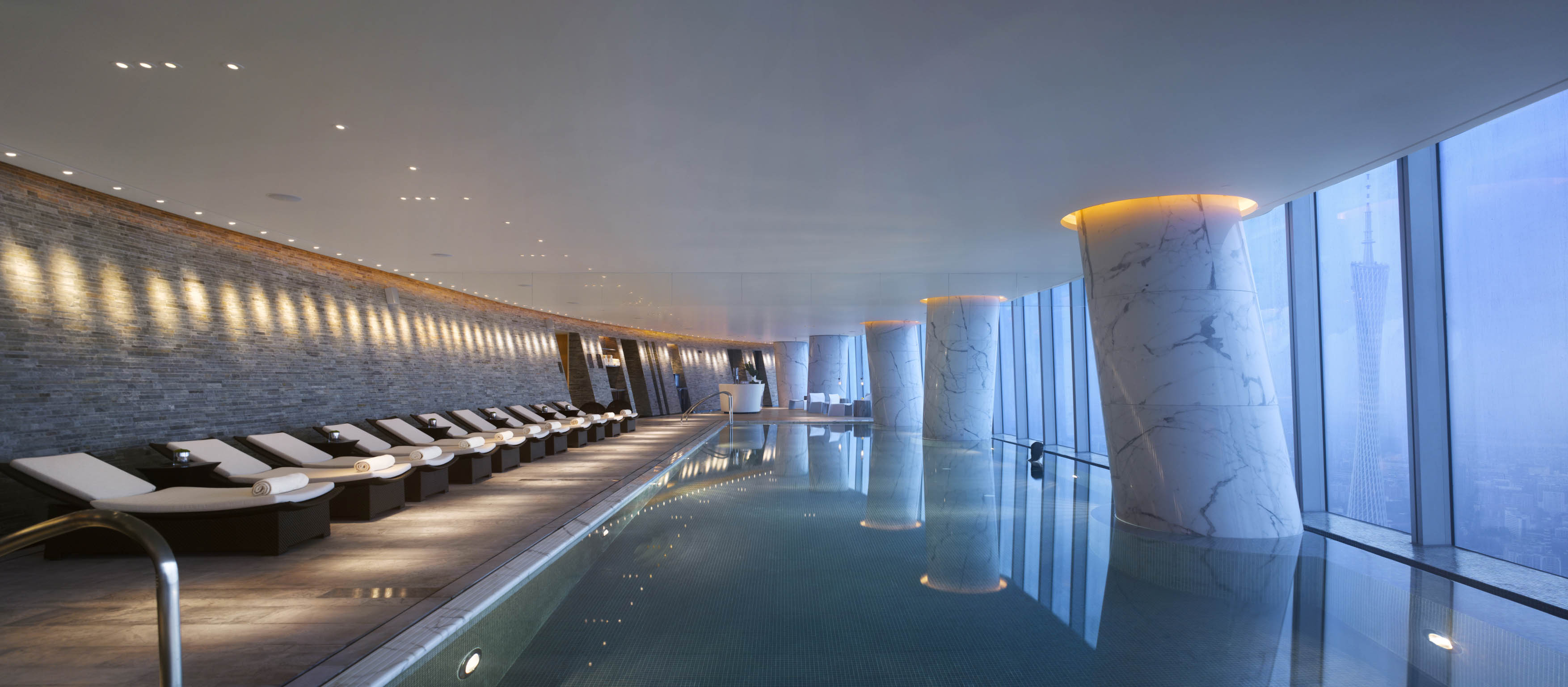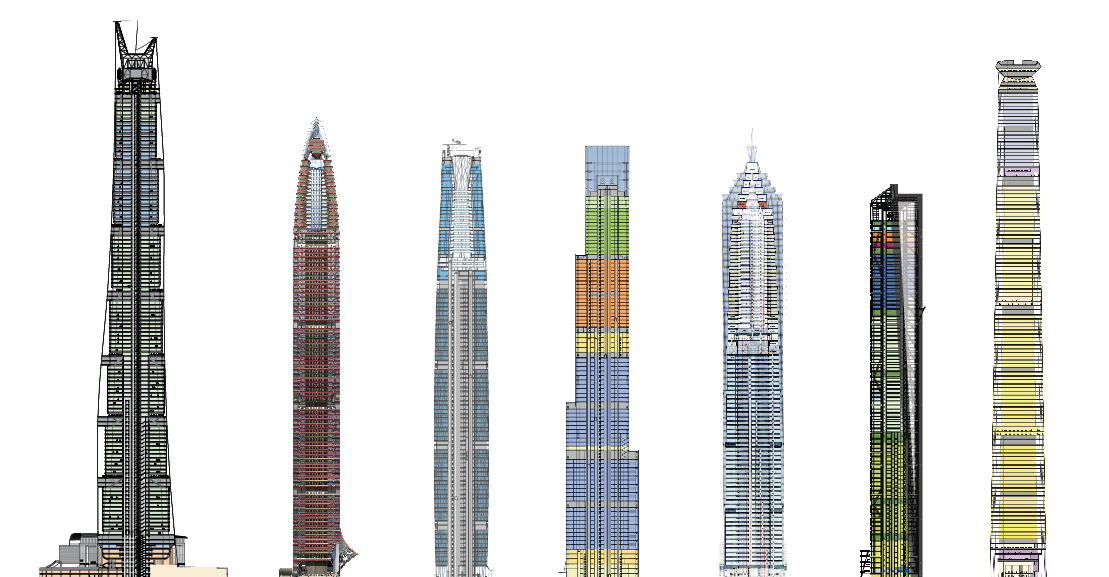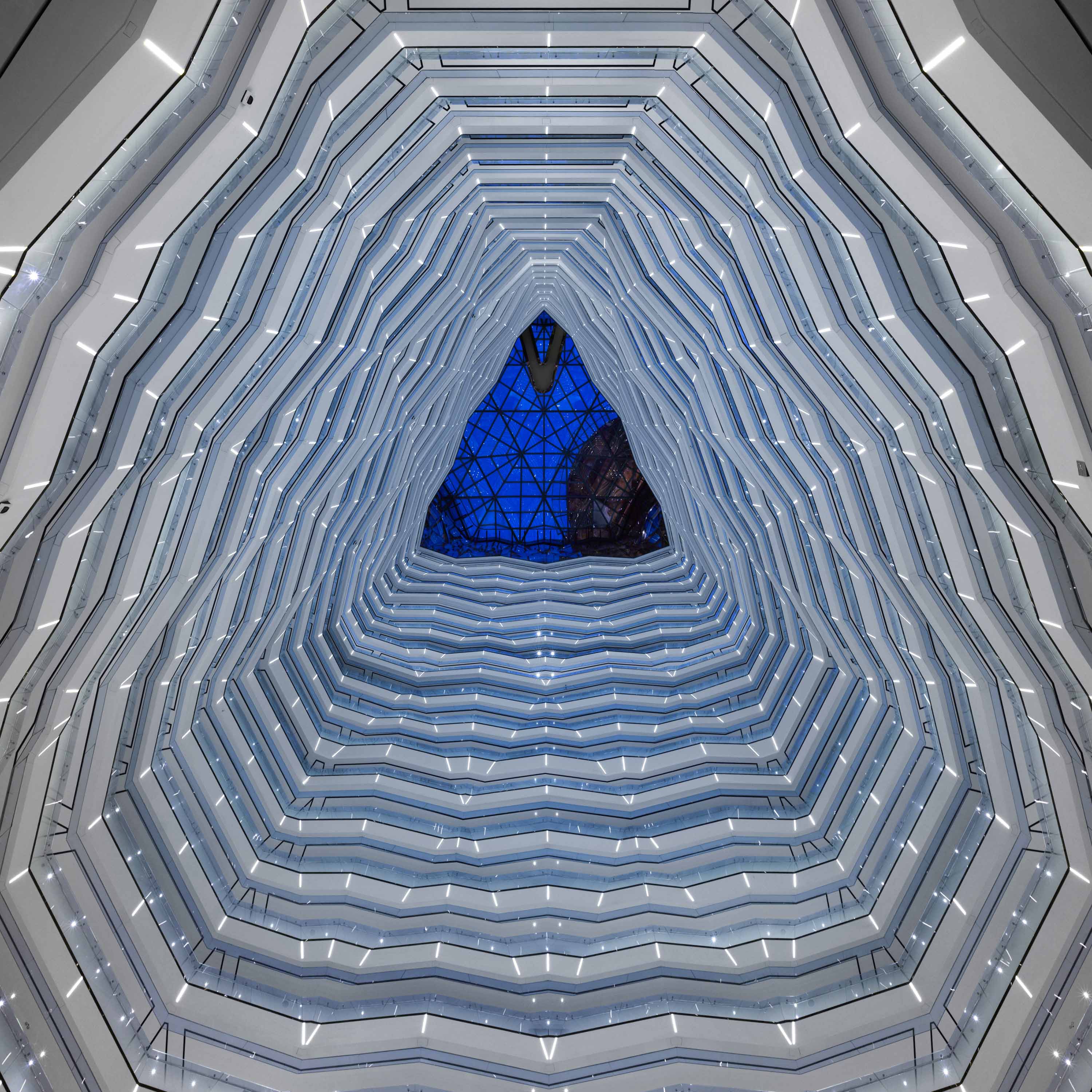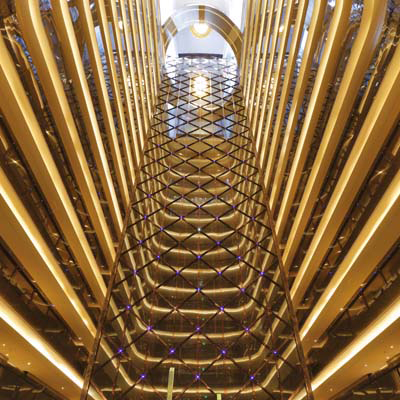The Skyscraper Museum is devoted to the study of high-rise building, past, present, and future. The Museum explores tall buildings as objects of design, products of technology, sites of construction, investments in real estate, and places of work and residence. This site will look better in a browser that supports web standards, but it is accessible to any browser or Internet device.
Hotel Tops
Twenty-first century supertalls are most often mixed-use buildings that combine office space on the lower floors and a luxury hotel in the top section. While offices need large, deep floor plates for workers and equipment and many elevators to handle the traffic, hotels need only a shallow perimeter of rooms oriented outward to the view.
Left: Guangzhou IFC atrium view towards skylight. Courtesy TFP Farrells. Right: KK 100 atrium looking up. Courtesy TFP Farrells.
There are two principal ways to adapt to this program: to taper or step-back the tower to create smaller floor plates or to hollow out an open atrium through the center of the building. The success of the Jin Mao tower in Shanghai, completed in 1999, established the popularity of the atrium hotel with a dramatic central void that rises twenty or more stories. A separate bank of elevators serve these upper floors and open onto corridors that allow all guests to experience the vertiginous space as they walk to their rooms.
The atrium approach was adopted in the hotel sections of IFC Guangzhou and KK100 in Shenzhen, represented here in sectional models and interior photography. At the IFC Guangzhou Four Seasons, the view from the reception floors up through the agate-like rings of the atrium balconies culminates in a triangular skylight. The floors just below the glass dome are enclosed by a faceted-glass curtain wall that enhances the sense of crystalline reflections at the crown.
At KK100, the St. Regis hotel placed its sky lobby high, on the 94th floor, cutting its open central court into the floors below. The stories above are organized as a cathedral-like glass vault, within which are stacked several ascending levels of bar, restaurant, smaller areas for socializing. Rather than having a public observation deck, these various hotel spaces serve as unique viewing platforms for the city far below.

The pool at Guangzhou IFC. Courtesy Wilkinson Eyre Architects. Photo credit Will Pryce.
Other tower-top hotels that do not feature an open atrium, such as the Ritz-Carlton in the ICC in Hong Kong and the Park Hyatt in the Shanghai World Financial Center, often share the highest floors with a public observation deck accessed from dedicated elevators at the ground level. In the hotel space below, the deep space can be devoted to meeting rooms, spas, storage, and mechanical systems, while spaces near the windows and prized views are reserved for restaurants, bars, swimming pools, and other luxury amenities of life at the top.
Composite line-up (top) illustrating the multiple functions or "programs" that are characteristic of 21st-century supertalls. The most common use of the upper floors is luxury hotels, with their semi-public restaurants and bars and, often public observation decks. Buildings left to right: Shanghai Tower, KK 100, Guangzhou IFC, Tianjin R&F Guandong Tower, Jin Mao Tower, Dalian Eton Center, Goldin Finance 117. Building images courtesy of their architects unless otherwise noted. Image composite copyright The Skyscraper Museum.



